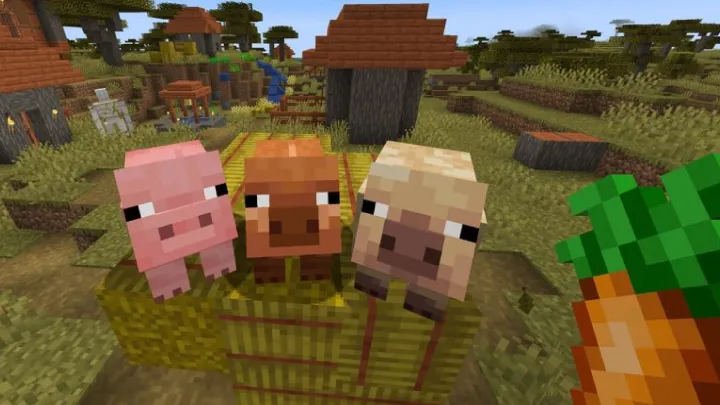Introduction
Survival games push players to their limits, but few are as tense and atmospheric as 99 Nights in the Forest. The game blends resource management, exploration, horror, and strategy into one long, nerve-racking experience where every choice counts. You are not just surviving a single night—you are enduring ninety-nine of them, each harder than the last.

In this guide, we’ll explore everything you need to know to endure the wilderness and survive the terrors that come with the night. From basic survival mechanics like fire-building and resource gathering to advanced strategies like fortification, stealth tactics, and managing psychological pressure, this article is your complete companion to lasting all 99 nights.
1. Getting Started: Understanding the Game’s Survival Loop
At its core, 99 Nights in the Forest revolves around a daily survival loop: gather resources during the day and endure the threats that emerge at night.
Daytime is your opportunity to collect wood, food, and crafting materials. These activities may feel safe at first, but time management is critical. If you spend too much time exploring, you may not have enough to prepare defenses before night falls.
Nighttime flips the tone of the game entirely. Darkness is when hostile creatures, supernatural forces, and the environment itself become your biggest threats. Preparation during the day determines how well you endure the long nights.
2. Essential Early-Game Survival Tips
The first ten nights are about learning mechanics and establishing a foundation. Your priority should be survival, not expansion.
- Build Fire Early: Fire not only keeps you warm but also wards off minor enemies. Never face the first nights without one.
- Stock Food and Water: Hunger and thirst will weaken your stamina. Forage berries, hunt small animals, and collect rainwater.
- Craft Basic Tools: A hatchet, spear, and simple shelter make the difference between surviving and respawning.
In the early game, avoid exploring too far from your camp. Focus on short resource runs and gradually expand your range.
3. Building Shelter and Defenses
Your shelter is more than a roof—it’s your lifeline. Weak shelters collapse under attacks, leaving you vulnerable.
Start small with a simple wooden hut. Upgrade it over time with reinforced walls, barricades, and traps around the perimeter. Position your shelter near natural barriers like cliffs or rivers for added protection.
A good shelter also doubles as storage. Organize your resources properly so you don’t waste time searching for items when panic sets in at night.
4. Crafting and Resource Management
Crafting drives your long-term survival. From weapons to cooking tools, every crafted item extends your chances of surviving all 99 nights.
Resource management is crucial. Wood fuels your fire, builds your shelter, and powers traps. Stone sharpens tools and creates stronger weapons. Rare resources, such as crystals or herbs, are vital for crafting advanced gear or healing tonics.
A smart player balances consumption and stockpiling. Never waste rare items too early, but also don’t hoard to the point of neglecting immediate needs.
5. Hunting, Gathering, and Farming
Food is as important as weapons. Without proper nutrition, your stamina drains quickly, making it harder to fight or escape.
- Hunting: Rabbits, deer, and boars are common sources of meat. Craft traps for passive food collection.
- Gathering: Berries and mushrooms are plentiful, but some are poisonous. Learn to identify safe variants early.
- Farming: Around night 20, shift toward sustainable farming. Building a small garden ensures food supply even when hunting becomes dangerous.
Mix your diet for balance. Relying on only one food type may leave you vulnerable to deficiencies or spoilage.
6. Combat and Stealth Tactics
The forest holds dangers that are not always best confronted head-on. Knowing when to fight and when to hide is key.

Combat requires preparation. Spears and bows are versatile weapons, while traps weaken enemies before they reach you. Always carry a backup melee weapon in case your primary breaks mid-battle.
Stealth is equally valuable. Staying low, moving quietly, and extinguishing your fire at strategic moments can help you avoid encounters entirely. Remember—sometimes surviving means not being seen at all.
7. Psychological Survival: Fear, Stress, and Isolation
99 Nights in the Forest doesn’t just test your physical survival—it challenges your mental resilience. Prolonged nights, disturbing sounds, and relentless enemies wear down your sanity.
Light, routine, and comfort keep your mind stable. Maintaining a lit fire, crafting decorative items, or even creating a “safe room” can help reduce stress.
Isolation also impacts gameplay. Hallucinations, paranoia, and panic events can trigger if you neglect mental health. Treat psychological survival as seriously as hunger and thirst.
8. Exploring the Forest Safely
The forest is vast, mysterious, and filled with secrets. Exploring expands your resources, but also increases risk.
Plan your routes carefully. Mark landmarks with crafted signs or fires to prevent getting lost. Explore in daylight and return before dusk to avoid being stranded.
Deeper exploration reveals rare resources, hidden shrines, or abandoned cabins. These locations often contain valuable loot but are usually heavily guarded by dangers. Always weigh the reward against the risk.
9. Surviving the Mid-to-Late Nights (50+)
The difficulty spikes significantly after night 50. Enemies grow stronger, resources scarcer, and your mental strain heavier.
By this stage, you should have a fortified base with multiple layers of defenses. Farming should be your primary food source, with hunting reserved for emergencies.
Advanced traps, stronger weapons, and crafted armor become mandatory. Some players even build multiple shelters across the forest, creating a network of safe houses. This way, if one base falls, survival continues.
10. Long-Term Strategy: Reaching Night 99
Enduring until the final night requires patience and strategy. By now, every decision matters more than ever.
Conserve resources for the inevitable final waves of enemies. Stockpile healing items, arrows, and firewood. Keep backup shelters ready in case of emergencies.
Mentally prepare as well—night 99 is not just about skill, but endurance. Only those who balance

Conclusion
99 Nights in the Forest is more than a survival game—it’s a test of patience, intelligence, and courage. Every night brings new challenges, from gathering food and crafting weapons to battling the supernatural and maintaining sanity. The deeper you go, the more the forest feels alive, almost as if it’s testing your will to continue.
By following this guide—mastering resources, crafting, shelter, combat, and mental health—you can turn a desperate struggle into a triumphant survival story. Few will make it to the final night, but those who do will have proven themselves true survivors.

















